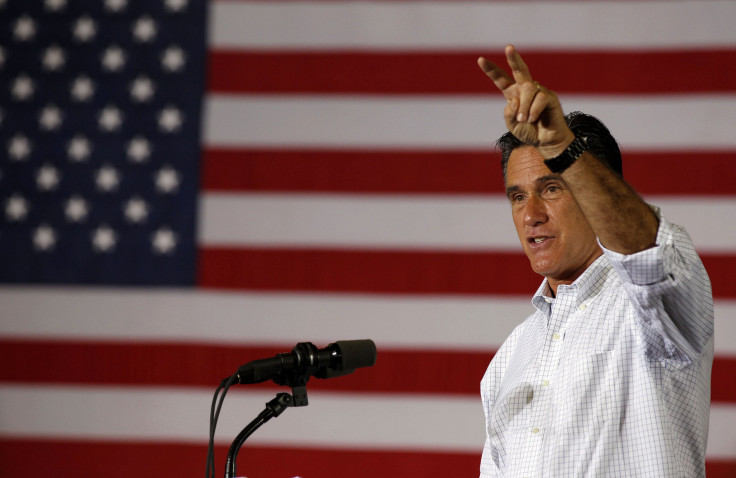Is Romney Up By Seven Points? Why Gallup's Latest Poll Is Skewed

The day after this week’s second presidential debate, when Gallup’s daily tracking poll put Mitt Romney six points ahead of President Barack Obama, Democrats were able to tell themselves it was a statistical fluke that did not take into account the president’s winning performance at the event. But when Gallup reported that Romney’s edge expanded to seven points on Thursday, panic ensued, leading some to speculate that Obama’s chances of winning a second term may already be dashed.
But is Romney’s lead really that formidable? While Gallup’s seven-day tracking poll shows Romney up by seven points with likely voters, he’s only up by one point with registered voters.
That’s not all. According to the most recent information available on Gallup’s website, Obama currently holds at least a four-point lead over Romney in every region except the South. In that section of the country, Obama is trailing Romney by a significant 22 points among likely voters, a big enough gap for Gallup to conclude the president is behind in the national vote.
Nate Silver, in a lengthy analysis of Gallup’s polling operation, reports that Gallup has an erratic history when it comes to accurately predicting the outcome of previous elections and suggests the organization’s likely-voter model may be flawed. Silver writes that Gallup's final polls have reported “implausibly large swings” in recent races. For instance, it reported a 10-point lead for John McCain after the Republican National Convention in 2008, when no other polling firm gave him more than a four-point lead.
That discrepancy is clear when comparing the Gallup numbers to the Real Clear Politics average of polls, which puts Romney in the lead by only one percentage point.
While there has not been any updated non-Gallup national polling since the second debate, a new NBC News/Marist poll shows Obama maintaining an 8-point lead in Iowa and a six-point lead in Wisconsin, the home of GOP vice presidential nominee Paul Ryan. The survey predicts that if Obama manages to win those battleground states, he could reach or surpass the 270 electoral college votes needed to snag the presidency by either winning just Ohio, a combination of Colorado, Nevada and New Hampshire or a combination of New Hampshire and Virginia.
If the president continues to lag in the South, the country could be heading for an Electoral College/popular vote split. Gallup Editor-in-Chief Frank Newport told Ezra Klein that, based on the numbers, “that’s certainly what it looks like,” although he also cautioned that the daily-tracking numbers may still reflect “leftover positive support for Romney, and I don’t think we’re seeing impact yet from the second debate."
Newport said Gallup's “likely voter” model yields results that are significantly different from polls that include all registered voters, where Obama and Romney are basically tied. The likely voter model takes into account how closely a respondent is following the race as well as changes in his or her enthusiasm, Newport said. In other words, Gallup's likely voter model may represent a voter’s immediate reaction to temporary events -- such as a spike in enthusiasm or disillusionment with a candidate, depending on the story of the day -- rather than provide a clear picture of where an individual voter stands.
Essentially, the race is still a dead heat. Don’t let the Gallup numbers let you think otherwise.
© Copyright IBTimes 2024. All rights reserved.





















